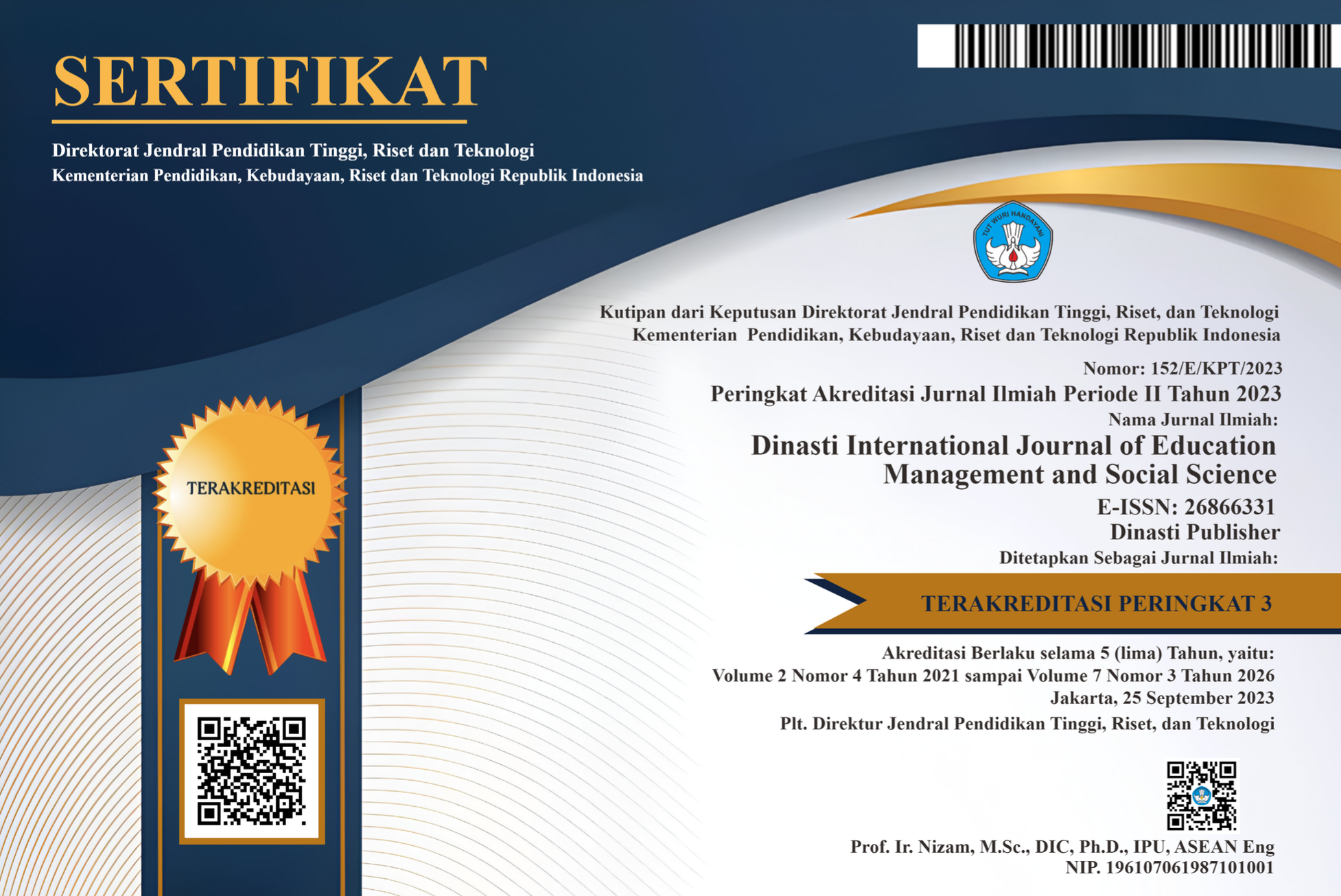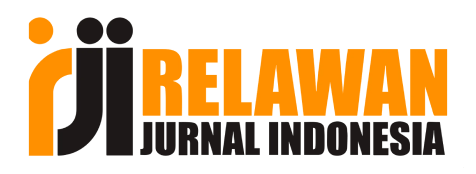Development of Inquiry-Based Interactive Multimedia to Improve Student Learning Outcomes of Pancasila Education Lessons
DOI:
https://doi.org/10.38035/dijemss.v6i4.4137Keywords:
Development, Interactive Multimedia, Inquiry, Learning OutcomesAbstract
In the learning process in the classroom, the conventional learning model is still used, where the teacher only plays the role of conveying information, while the students are passive listeners. This study aims to produce inquiry-based interactive multimedia that has been tested for media feasibility and has been proven effective in improving cognitive, affective, and psychomotor learning outcomes in fifth-grade students of Pancasila education at SDN 056425 Damar Seratus. The type of research used is Research and Development (R&D), commonly referred to as research and development. The development design in this study uses the Analysis Design Development Implementation Evaluation (ADDIE) model. The subjects of the research are fifth-grade students of SDN 056425 Damar Seratus. The results of the validation by media experts, design experts, material experts, education practitioners, and the results of field trials (individuals and small groups) indicate that the developed media products are suitable for use and categorised as very good. The Inquiry-Based Interactive Multimedia product in the form of Articulate Storyline 3 developed is also effective for use. The effectiveness of the developed media products is evidenced by the N-Gain test, which yielded a result of 0.6, and the hypothesis test, which yielded t-count = 8.286 and t-table = 1.705, thus t-count > t-table, leading to the acceptance of Ha and rejection of H0. In addition to being effective in improving cognitive learning outcomes in students, this inquiry-based interactive multimedia in the form of articulate storyline 3 is also effective in changing affective and psychomotor aspects in students. In the affective aspect, an average score of 44.9 was obtained with an average score percentage of 89.9%, this proves that the affective aspect of students has changed significantly with the very good category. In the psychomotor aspect, the results were obtained with an average score of 37.7 with an average score percentage of 75.4%, this proves that the psychomotor aspect students has changed significantly with the good category.
References
Angin, R. (2022). Penerapan Model Inquiry Learning Terhadap Hasil Belajar Siswa Pada Mata Pelajaran Pendidikan Kewarganegaraan (Pkn) Di Kelas Vi Sd Negeri 043934 Simpang Singa Semester Ii T.P 2021/2022. Jurnal Ilmu Pendidikan Dan Sosial, 1(3), 254–265. https://doi.org/10.58540/jipsi.v1i3.51
Ardian, S., Hasanah, W. K., & Rana, F. I. (2020). Pemanfaatan Microsoft Sway Dan Microsoft Form. Pendidikan Sejarah Dan Ilmu Sejarah, 3(2), 66–74.
Arikunto, S. (2010). Prosedur Penelitian Suatu Pendekatan Praktik. Jakarta: Rincka Cipta.
Armianti, R., et all. (2024). Paradigma Baru Pembelajaran PKn di Sekolah Dasar dalam Membentuk Karakter Siswa di Era Revolusi Industri 4.0. Edu Cendikia: Jurnal Ilmiah Kependidikan, 4(2), 656-664. https://doi.org/10.47709/educendikia.v4i02.4623
Armianti, R., et all. (2024). Integrasi Teknologi Digital dalam Pembelajaran Pendidikan Pancasila untuk Penguatan Profil Pelajar Pancasila. Edu Cendikia: Jurnal Ilmiah Kependidikan, 4(2), 656-664. https://doi.org/10.47709/educendikia.v4i02.4838
Astuti, W., et all. (2023). Penerapan Model Problem Based Learning Berbantuan Media Power Point untuk Meningkatkan Hasil Belajar PKn pada Siswa Kelas V SDN Wonokusumo VI/45. Journal on Education, 5(2), 3114-3119.
Dewanto, I. J., Hidayat, S., & Sukmayadi, D. (2021). Pengembangan Pembelajaran Inkuiri Berbantuan Multimedia Interaktif Pada Mata Pelajaran Ipa Kelas V Sd. Jurnal Muara Pendidikan, 6(1), 76–89. https://doi.org/10.52060/mp.v6i1.490
Erwin, V. A., & Yarmis, Y. (2019). Multimedia Interaktif Bermuatan Permainan Edukatif Di Kelas V Sekolah Dasar. Jurnal Basicedu, 3(2), 901–908.
Fazri, AS., & Nuria, D. (2024). Pengaruh Model Pembelajaran Inquiry terhadap Hasil Belajar IPA Siswa Kelas VI Sekolah Dasar. Jurnal Pendidikan Tambusai, 8(1), 6867-6874.
Hake, RR. (1999). Analyzing charge Gain scores. America Educational Research Association's Division, Measurrement and Research Methodology
Indra, AD., Azis, A., & Dewi, LGMW. (2023). Panduan Guru Pendidikan Pancasila untuk SD/MI Kelas V. Jakarta Selatan: Kementerian Pendidikan, Kebudayaan, Riset, dan Teknologi.
Indriyanti, L., Gani, A. A., & Muhardini, S. (2020). Pengembangan Media Puzzle untuk Meningkatkan Hasil Belajar Siswa Kelas 1 SDN 38 Mataram. CIVICUS?: Pendidikan-Penelitian-Pengabdian Pendidikan Pancasila Dan Kewarganegaraan, 8(2), 108. https://doi.org/10.31764/civicus.v8i2.2931
Mubarak, Z. (2022). Desain Kurikulum Merdeka Belajar Untuk Era Revolusi Industri 4.0 Dan Society 5.0. Tasikmalaya: CV. Pustaka Turats Press.
Muriati, S. (2014). Pengembangan Bahan Ajar Biologi Sel Pada Program Studi Pendidikan Biologi Uin Alauddin Makassar. Florea?: Jurnal Biologi Dan Pembelajarannya, 1(2). https://doi.org/10.25273/florea.v1i2.383
Nababan, D., et all. (2023). Penerapan Strategi Pembelajaran Inquiry Dapat Menjadikan Siswa Aktif Dalam Pembelajaran. 5(2), 1–14. https://www.ncbi.nlm.nih.gov/books/NBK558907/
Nurul, H. (2017). Manajemen Pengembangan Kurikulum. Jurnal Manajemen Pendidikan Islam, 1(2), 52-75.
Pristiwanti, D., et all. (2022). Pengertian Pendidikan. Jurnal Pendidikan dan Konseling, 4(6), 7911-7915.
Robbia, A. Z., & Fuadi, H. (2020). Pengembangan Keterampilan Multimedia Interaktif Pembelajaran IPA Untuk Meningkatkan Literasi Sains Peserta Didik di Abad 21. Jurnal Ilmiah Profesi Pendidikan, 5(2), 117–123. https://doi.org/10.29303/jipp.v5i2.125
Sugiyono. (2017). Metode Penelitian dan Pengembangan (Research and Development/ R&D). Bandung: Alfabeta.
Wahab, G., & Rosnawati. (2021). Teori-Teori Belajar Dan Pembelajaran. Jawa Barat: CV. Adanu Abimata
Yunita, S., Jamaludin, J., & Feriyansyah, F. (2022). Citizenship Learning Through Self Organized Learning Environment on Students’ Learning Styles. Devotion?: Journal of Research and Community Service, 3(11), 1054–1065. https://doi.org/10.36418/dev.v3i11.213
Downloads
Published
How to Cite
Issue
Section
License
Copyright (c) 2025 Riska Armianti, Sri Yunita, Retno Dwi Suyanti

This work is licensed under a Creative Commons Attribution 4.0 International License.
Authors who publish their manuscripts in this journal agree to the following conditions:
- The copyright on each article belongs to the author(s).
- The author acknowledges that the Dinasti International Journal of Education Management and Social Science (DIJEMSS) has the right to be the first to publish with a Creative Commons Attribution 4.0 International license (Attribution 4.0 International (CC BY 4.0).
- Authors can submit articles separately, arrange for the non-exclusive distribution of manuscripts that have been published in this journal into other versions (e.g., sent to the author's institutional repository, publication into books, etc.), by acknowledging that the manuscript has been published for the first time in the Dinasti International Journal of Education Management and Social Science (DIJEMSS).















































